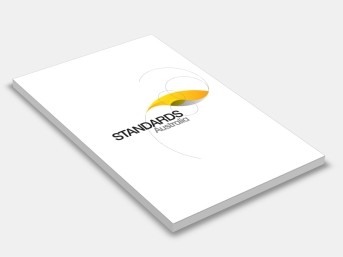AS/NZS 3000:2000 Electrical installations (known as the Australian/New Zealand Wiring Rules)
Standards Australia/Standards New Zealand
Amended by: AS/NZS 3000:2000 AMDT 1 Electrical installations (known as the Australian/New Zealand Wiring Rules)
Amended by: AS/NZS 3000:2000 AMDT 2 Electrical installations (known as the Australian/New Zealand Wiring Rules)
Amended by: AS/NZS 3000:2000 AMDT 3 Electrical installations (known as the Australian/New Zealand Wiring Rules)
This Standard was prepared by the Joint Standards Australia/Standards New Zealand Committee EL/1, Wiring Rules, to supersede, in Australia, AS 3000 — 1991, Electrical installations — Buildings, structures and premises (known as the SAA Wiring Rules) and, in New Zealand, selected parts of NZS 3000:1997 Electrical installations — Buildings, structures and premises (known as the NZS Wiring Rules) as nominated by the appropriate regulator.
This Standard incorporates Amendment No.1 (September 2001) and Amendment No. 2 (April 2002) and Amendment No. 3 (July 2003). The changes required by the Amendment are indicated in the text by a marginal bar and amendment number against the clause, note, table, figure or part thereof affected.
This edition of the Standard is based on the following considerations:
(a) Requests from large sections of the electrical industry for a document more relevant to the present electrical regulatory structure.
(b) Requests for a joint Australian/New Zealand document.
(c) Experience gained in the application of the tenth (1991) edition as expressed to Standards Australia.
During preparation of this Standard, reference was made to IEC 60364, Electrical installations of buildings (all parts), BS 7671:1992, Requirements for electrical installations and the National Rules For Electrical Installations (Second Edition) of Ireland, and acknowledgment is made of the assistance received from these sources.
The presentation of this edition differs from previous editions of AS 3000. Sections 1 to 5 cover essentially the same aspects of the subject as Sections 1 to 5 of the previous edition but there is no close correlation between clause numbers. Other major changes to the content of the previous edition include the following:
(i) The introduction of internationally accepted performance based requirements for the integration of the characteristics of protective devices with the earthing system impedance (fault-loop impedance), touch-voltage limits and maximum disconnection times under fault conditions (see Clause 1.7.4.3).
(ii) The deletion of many prescriptive ‘work practices’ and the allowance of alternative methods provided they satisfy the fundamental requirements of Section 1.
(iii) The introduction of a new Section 6, covering visual inspection and testing.
(iv) The introduction of an IEC-style Section7 containing particular requirements for special locations and situations, e.g. swimming pools, extra-low voltage installations and emergency systems.
(v) The deletion of the limited range of current-carrying capacities for cables and busbars.
(vi) The inclusion of guidance on the calculation of maximum demand in Appendix C.
(vii) The application of the requirements to electrical installations which might affect livestock.
Some of these provisions were included in NZS 3000.
Equations have been given the same number as the clause in which they appear.
An electric shock survival (resuscitation) chart is provided only for guidance; persons associated with the installation and repair of electrical installations and electrical equipment should obtain training in resuscitation methods.
This Standard may be applied through legislative requirements, as indicated in Clause 1.2. As this Standard supersedes AS 3000 —1991, in Australia, and NZS 3000:1997, in New Zealand, it would normally apply to electrical installations from its date of publication, but it is recommended that it not be applied on a mandatory basis before a date at least six months after publication. However, if work on an installation was commenced before publication of this edition, the relevant regulatory authority or electricity distributor may grant permission for the installation to be completed in accordance with AS 3000 — 1991 or NZS 3000:1997.
The attention of users of this Standard is drawn to Doc 3000 N (2000) What’s new in the Wiring Rules, which outlines the major changes to this Standard as compared to AS 3000 — 1991.
Supplement No 1 (1991), which contained current-carrying capacities for cables with imperial dimensions, has been withdrawn.
All Rulings to AS3000—1991 have either been incorporated into this Standard or withdrawn. New Rulings will be prepared as requested and when published will be available for purchase from Standards Australia or Standards New Zealand.
Statements expressed in mandatory terms in notes to tables and figures are deemed to be requirements of this Standard.
The term, ‘informative’ has been used in this Standard to define the application of the appendix to which it applies. An ‘informative’ appendix is only for information and guidance.
Contents:
Foreword
Section 1: Scope And Fundamental Safety Principles
Section 2: Selection And Installation Of Switchgear And Control Gear
Section 3: Selection And Installation Of Wiring Systems
Section 4: Installation Of Appliances And Accessories
Section 5: Earthing Arrangements And Earthing Conductors
Section 6: Testing And Verification
Section 7: Requirements For Special Electrical Installations Or Locations
Appendix A: List Of Referenced Documents
Appendix B: Circuit Arrangements
Appendix C: Calculation Of Maximum Demand
Appendix D: Aerial Lines Data
Electric Shock Survival
Wiring Rules.
EL-001
